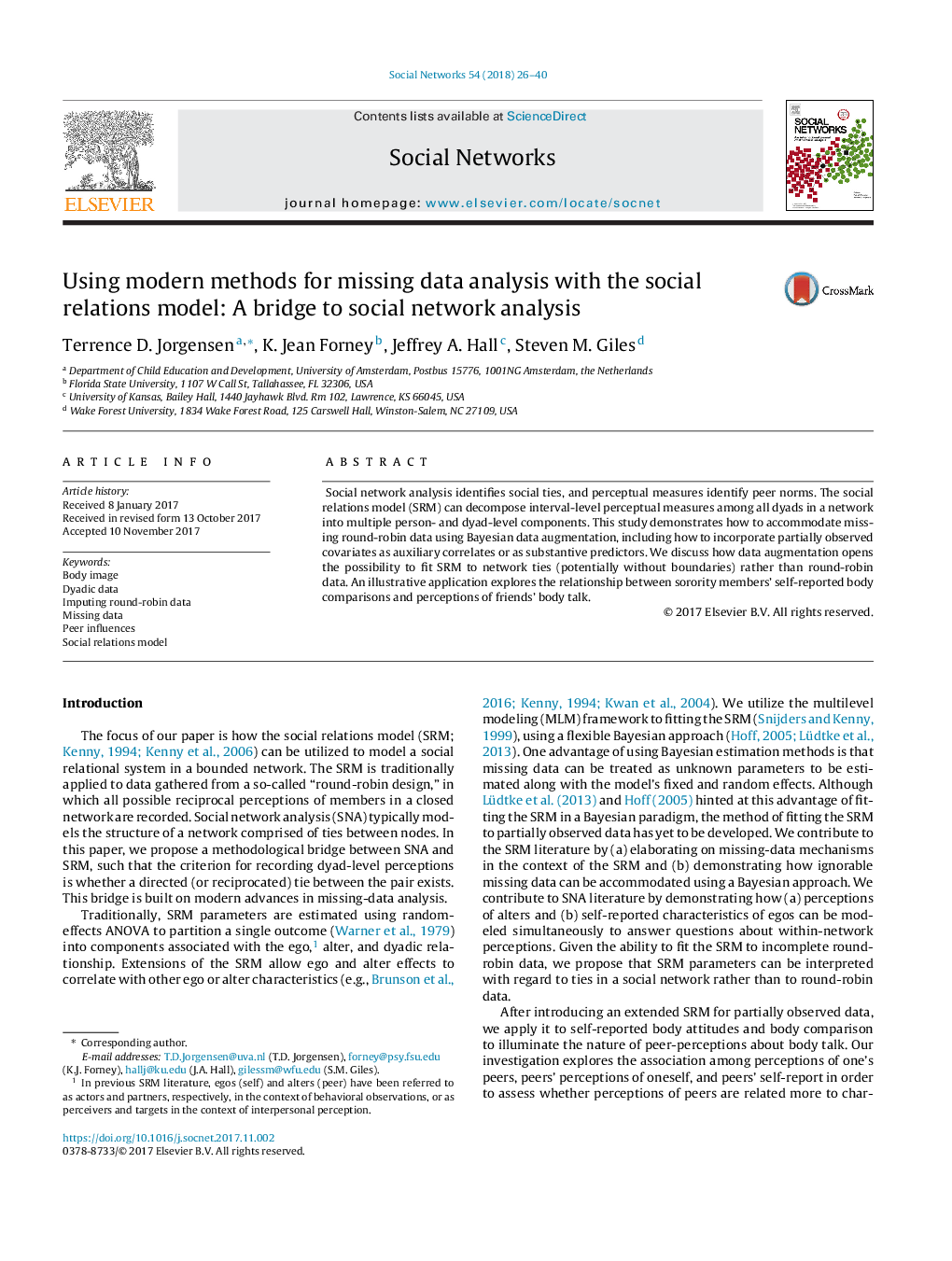| Article ID | Journal | Published Year | Pages | File Type |
|---|---|---|---|---|
| 7538246 | Social Networks | 2018 | 15 Pages |
Abstract
Social network analysis identifies social ties, and perceptual measures identify peer norms. The social relations model (SRM) can decompose interval-level perceptual measures among all dyads in a network into multiple person- and dyad-level components. This study demonstrates how to accommodate missing round-robin data using Bayesian data augmentation, including how to incorporate partially observed covariates as auxiliary correlates or as substantive predictors. We discuss how data augmentation opens the possibility to fit SRM to network ties (potentially without boundaries) rather than round-robin data. An illustrative application explores the relationship between sorority members' self-reported body comparisons and perceptions of friends' body talk.
Related Topics
Physical Sciences and Engineering
Mathematics
Statistics and Probability
Authors
Terrence D. Jorgensen, K. Jean Forney, Jeffrey A. Hall, Steven M. Giles,
